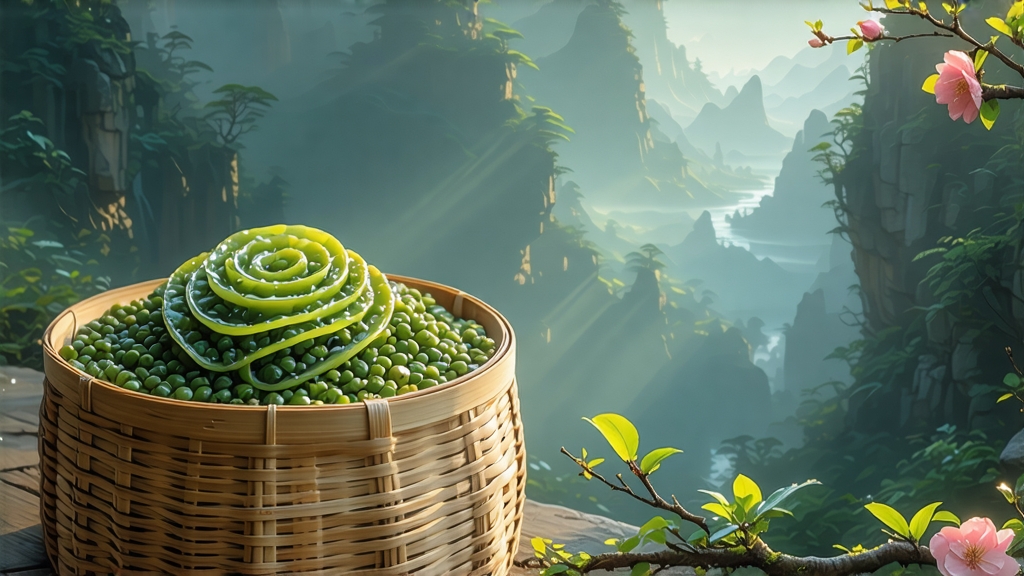
Tucked between the Yangtze River and the vast Lake Tai in Jiangsu Province lies Dongting Mountain, an island whose peaks are perpetually wrapped in humid spring fog. Here, among apricot and plum trees that bloom in synchrony with the first tea flushes, the tiny, jade-green spirals known as Biluochun—“Green Snail Spring”—have been coaxed into existence for more than a thousand years. To the uninitiated, the name evokes a delicate shellfish; to the tea devotee, it conjures one of China’s most celebrated green teas, once so coveted that Kangxi Emperor reportedly renamed it after its resemblance to a snail’s coil and its early-spring harvest.
1. Historical whispers: from temple gardens to imperial cups
The earliest written record appears in the Tang Dynasty’s “Classic of Tea,” yet Biluochun remained a local monastery secret until the late Ming, when traveling scholars carried tiny caches to Suzhou’s teahouses. By the Qing, tribute quotas squeezed the mountain hamlets; each kilogram demanded 70,000 buds. Legends tell of tea pickers who sang to the bushes so the leaves would “listen” and grow more fragrant. Whether myth or marketing, the story hints at an intimacy between people and plant still palpable today.
2. Terroir: where lake, rock, and blossom intersect
Dongting’s microclimate is a fortuitous accident: the lake moderates temperature, while granite outcrops radiate afternoon heat, creating a diurnal swing of 10 °C that stalls oxidation and stacks amino acids. Fruit trees—peach, plum, loquat—intercrop the tea gardens; their roots share mycorrhizal networks, and their petals fall like snow onto the bushes, imprinting a whispered orchard note that later emerges in the cup.
3. Cultivars: two bushes, one soul
Although “Biluochun” is a protected geographical indication, two clonal lines dominate:
- Xiao Ye Zhong (“small-leaf species”)—traditional, slow-growing, yields an ultra-sweet liquor with marine umami.
- Fu Ding Da Bai (“Fuding big white”)—introduced in the 1970s for higher yield; buds are plumper, producing a creamier body but less complexity. Purists insist the original Xiaoye, grown above 200 m on the island’s eastern cliffs, is the only authentic voice.
4. Craft: the art of killing green in a wok the size of a moon
Harvest begins when the overnight temperature lingers at 12 °C and two leaves and a bud stretch exactly 1.5 cm—about the length of a grasshopper’s thigh. Pickers wear cotton gloves to prevent fingerprint bruises; leaves rest in shallow bamboo trays for two hours of withering, enough to evaporate surface moisture without enzymatic rebellion.
The kill-green wok is seasoned with tea oil; its surface temperature is tested by flicking water—if droplets skitter like pearls, it is 180 °C, ready for the first 3-minute toss. The master’s wrist rotates 300 times per minute, a motion called tui, ya, kou, (“push, press, flick”) that drives moisture outward while locking in the floral precursor geraniol. After initial firing, leaves are rolled into tight spirals on a bamboo mat; the pressure must equal the weight of a 300-page book held between thumb and forefinger. A second, cooler firing (70 °C) reduces residual moisture to 5 %, shrinking the leaf to 6 % of its original volume. One kilogram of finished tea requires, impossibly, 90,000 buds—roughly one afternoon’s work for five pickers.
5. Grading: how to read a snail’s coat
Top-grade Biluochun exhibits “five whites”: silvery down on the bud, pale vein on the underside, light green stem, ivory-colored liquor, and a platinum halo around the cup’s rim. Lower grades darken to spinach green and lack the fruity top note. The most reliable test is the “three-sink” phenomenon: when scattered on still 75 °C water, premium buds drift down, rise once as gases escape, then sink again like tiny green comets—a dance novices watch with held breath.
6. Brewing: the Suzhou courtship ritual
Water: spring or filtered, 75–80 °C;